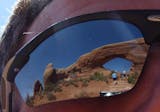Choose the Right Cycling Helmet for Your Sport

The best cycling helmet is one that’s purposely designed for your style of riding. That could be anything from a cycling club road ride to an iron-distance triathlon to a downhill mountain biking course. There are even helmets designed with commuters in mind. These everyday lids are built to withstand the daily insults they endure, from being locked to a bike or tossed around when not worn. One attribute all of these helmets share is the ability to protect your head in a crash or fall. From that function, the form must follow. Read on to see how Rudy Project cycling helmets cover every variation of the sport and make safety their top priority.
Bike Helmet Considerations, Ranked
-
Fit and Comfort
No matter how superior the crash protection is, if the helmet is painful or uncomfortable, you won’t wear it. A high-quality helmet will use a retention system to secure it horizontally (side-to-side, front-to-back). In most cases, this involves cinching a strap system tight across the back of your head. The strap connects to the sides and front of the helmet and further allows you to dial in a customized, comfortable fit if the helmet is slightly larger than your head. The RSR 10 Retention System, used by Rudy Project, does one better: It also adjusts vertically so riders with smaller or bigger heads can further perfect the fit. This snug fit keeps your helmet on your head in a fall or accident. - Crash Protection
Modern helmets employ a thick, expanded polystyrene (EPS) foam liner to protect your head in a crash. Upon impact, it disburses the force throughout the rest of the foam liner instead of letting your head absorb the shock directly. In many helmets, the EPS foam is integrated with the exterior hard shell for durability. Rudy Project pushes the protection further, using a polycarbonate exoskeleton in some -
Protective Technology
Advanced helmets use a secondary protection layer between the hard outer shell and the EPS liner. This thin layer allows the outside of the helmet to rotate in the event of an angled or side impact, further dissipating the force smashing your head. Demonstrating an uncompromising commitment to quality and protection, Rudy Project adopted the WG11 testing protocol to ensure every helmet they design adheres to the standards advocated by CEN, the European Committee for Standardization. -
Ventilation
Your type of riding and where you ride will guide your ventilation needs. In hot climates and on long courses, you’ll need more ventilation to regulate your body temperature. In short, more vents mean a cool head. Fewer vents equal more protection and better aerodynamics. Thankfully, innovative helmet design is helping to narrow the gap between safety and ventilation. A well-designed helmet that maximizes airflow through the helmet can be just as cool to wear as one that looks like little more than a plastic hair net. For a prime example of how a highly protective helmet uses strategic ventilation design to provide maximum comfort and cooling, check out Rudy Project’s Nytron Road Aero helmet.
Match the Cycle Helmet to Your Ride
Road Cycling
The best road cycling helmets will be ultralight and well-ventilated — not to mention ultra-safe to maximize protection in high-speed crashes like those that happen in a sprint to the finish line of a race. With a perfect fit, the rider should almost forget it's on their head. The Rudy Project Egos helmet is designed for just this type of rider. On the flip side, road cyclists looking for a competitive advantage or those who want to go faster on their solo rides can turn to the Nytron aero-road helmet, which offers a quantifiable boost of speed versus classic ventilated helmets.
Mountain Biking
Mountain bike helmets, such as Rudy Project’s Protera+, feature more protective coverage than road helmets, especially across the back of the head. In addition, they also offer a removable visor that serves two purposes: pushing branches, bushes, and other obstacles away from your eyes and blocking sunlight that can compromise vision. This shaded vision is vital when riding through dappled sunlight. Without the visor, your eyes will constantly readjust to shadow and sun in split seconds, eventually leading to eye fatigue.
Gravel Biking
Either road cycling or mountain biking helmets are appropriate for gravel riding. Your choice depends on the type of gravel you ride. Spin along dirt farm roads, mostly? A road helmet will work well. Grind up Forest Service roads in the mountains? A traditional mountain bike helmet will likely be more appropriate.
Triathlon
Triathletes seek out any gear advantage possible with aero-bars and wind-tunnel-tested bikes and wheels. The same goes for their triathlon helmet. Aerodynamic efficiency takes precedence over comfort. Or at least it did. With The Wing, Rudy Project produced one of the most aerodynamically efficient and comfortable tri helmets ever. A removable vent plug opens up the helmet to let air flow through the lid, while an exhaust port in the rear further dissipates heat and helps diffuse the turbulent air rolling off the back of the helmet.
Commuter
Lightweight and enough ventilation to make the helmet comfortable are key considerations. But robust construction and value — like you find in the Strym Z — is what you really want in an everyday commuter helmet. That’s because most will get dinged, scratched, and bashed from being thrown in a bag, locked to a bike, or hung off the rear of a backpack. In short, they lead a rough life, but they still need to be durable enough to protect your head in a crash. When you find that perfect combination of comfort, protection, and durability, you’ve found the ideal commuter helmet.










